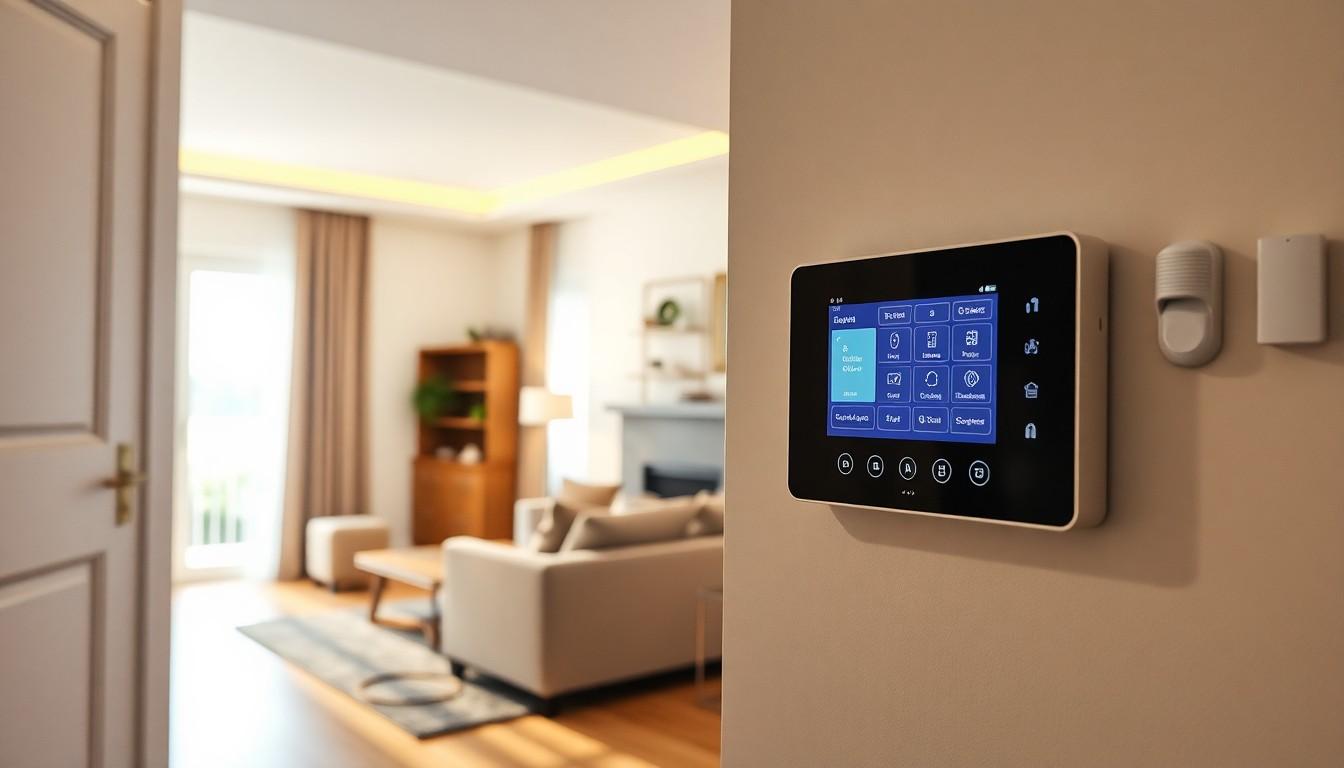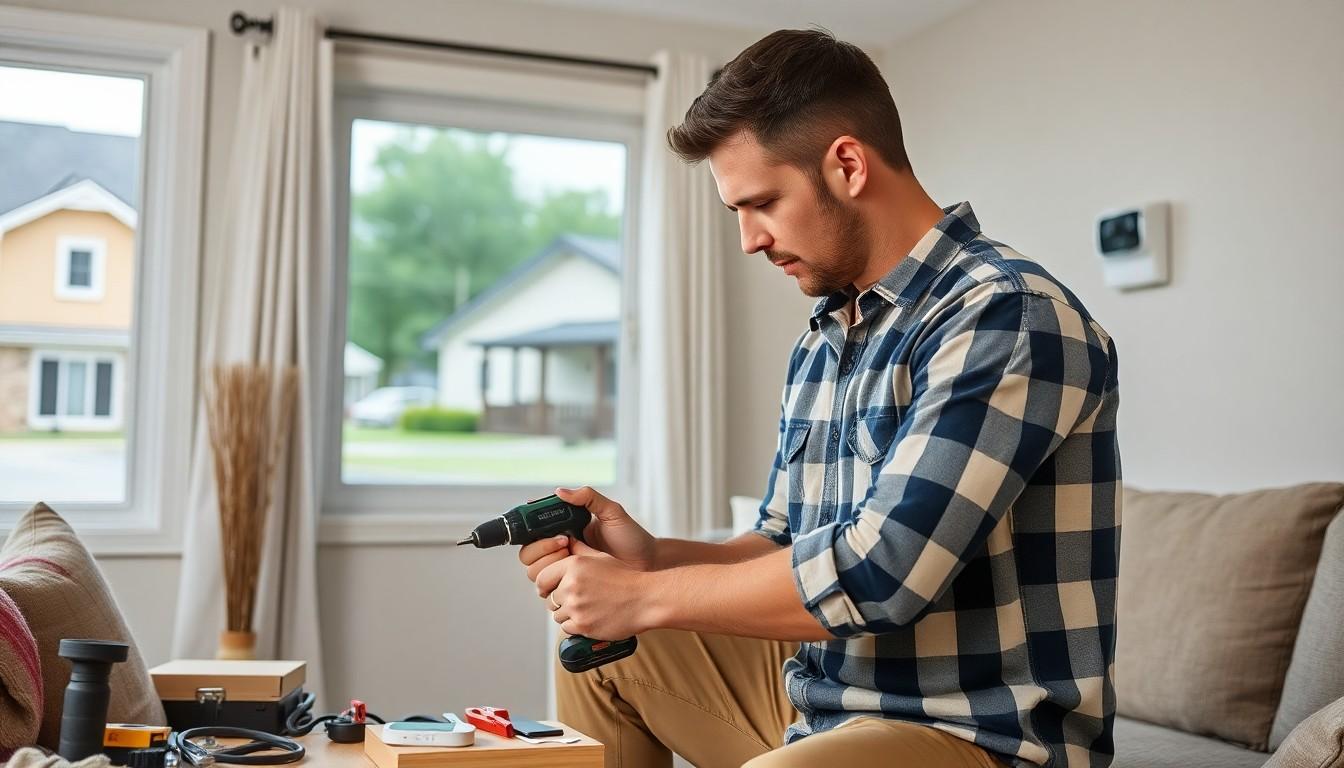In a world where home security is more crucial than ever, why leave it to the pros when you can become your own security guru? Wired home alarm systems are like the superhero of home protection—reliable and always ready to save the day. With a little DIY spirit, anyone can transform their humble abode into a fortress without breaking the bank.
Imagine this: you, armed with tools and a vision, installing a system that not only keeps the bad guys at bay but also impresses your friends. It’s time to roll up those sleeves and dive into the world of wired alarm systems. Not only will you gain peace of mind, but you’ll also have a great story to tell at the next dinner party. Who knew home security could be this fun?
Table of Contents
ToggleOverview Of Wired Home Alarm Systems
Wired home alarm systems provide homeowners with reliable security solutions that they can install themselves. These systems utilize physical wiring for sensors and alarms, ensuring stable and consistent connections.
Benefits Of Wired Systems
Wired systems offer several advantages for home security. They tend to be more reliable compared to wireless systems, as they aren’t subject to interference from electronic devices. Installation of wired systems allows for customization, enabling homeowners to tailor setup based on specific needs. Cost-effectiveness represents another key benefit; despite initial installation expenses, wired systems typically require less maintenance over their lifespan. Durability plays a significant role as well; wires are less prone to tampering or damage from environmental factors, providing added peace of mind.
Drawbacks Of Wired Systems
Wired systems come with certain disadvantages. Installation can prove challenging, requiring homeowners to undertake extensive planning and potentially invasive tasks, such as drilling holes. Flexibility might also be limited; once installed, repositioning components necessitates extra effort. In terms of aesthetics, visible wires may detract from a home’s visual appeal. Furthermore, if damage occurs to wiring, it can lead to costly repairs or system failure. Despite these drawbacks, many still opt for wired systems due to their reliability and effectiveness in securing their homes.
Components Of A Wired Home Alarm System

A wired home alarm system consists of several key components, each playing a vital role in ensuring effective security. Understanding these components is essential for successful installation and operation.
Control Panel
The control panel serves as the system’s brain, managing communication between all components. Users can arm and disarm the system through the control panel. Many options are available, including keypads and touchscreen interfaces. Some models connect to mobile devices for remote monitoring. It’s crucial for homeowners to select a control panel that suits their needs.
Motion Sensors
Motion sensors detect movement within specified areas. They utilize passive infrared technology, enabling them to identify body heat. Installed in hallways or common areas, these sensors trigger alerts when activity occurs. Coverage often spans 30 to 40 feet, but this can vary among models. Homeowners must position motion sensors thoughtfully to maximize coverage and minimize false alarms.
Door And Window Sensors
Door and window sensors monitor entry points for unauthorized access. These sensors usually consist of two parts: a magnet and a switch. When the door or window opens, the magnet separates from the switch, triggering an alarm. Each entry point may require its own sensor. Effective placement is critical for ensuring comprehensive security.
Sirens And Alarms
Sirens and alarms provide audible alerts during security breaches. Their primary purpose is to deter intruders and notify homeowners of unauthorized access. Many systems feature loud alarms that can reach 100 decibels or more. Options include wired sirens or integrated alarms within the control panel. Homeowners should consider placement to ensure maximum sound coverage throughout the property.
Setting Up A DIY Wired Home Alarm System
Setting up a wired home alarm system empowers homeowners to enhance security effectively. The installation process requires careful planning and specific materials to ensure everything functions properly.
Planning Your Installation
Begin by assessing the home layout and identifying vulnerable entry points. Evaluate areas needing coverage, such as windows and doors. Create a schematic diagram to pinpoint sensor and component placement for optimal protection. Consider future needs, such as additional sensors or alarms, to simplify expansion. Prioritizing wire routes can minimize visible wiring and keep the installation neat.
Required Tools And Materials
Gather essential tools and materials before starting the installation. Obtain a drill and various drill bits to secure components. Use wire strippers to prepare the wire ends for connection, ensuring reliable contact. Secure screws and anchors to mount devices properly. Required materials include the control panel, motion sensors, door and window sensors, wiring, and sirens. Having zip ties on hand helps organize wiring for a cleaner setup.
Step-By-Step Installation Guide
Start with the control panel installation in a central location for effective monitoring. Connect wires to the control panel first, ensuring power and signal continuity. Follow by installing door and window sensors at entry points, securing them firmly. Next, position motion sensors in high-traffic areas to maximize detection effectiveness. Connect sirens and alarms strategically to ensure loud alerts. Test the entire system after installation to confirm each component functions correctly.
Maintenance And Troubleshooting
Regular upkeep and troubleshooting ensure a wired home alarm system operates efficiently. Following specific maintenance guidelines helps maintain reliability and enhances security.
Regular Maintenance Tips
Schedule routine inspections of all components, such as sensors and the control panel. Testing functionality every few months guarantees the system responds correctly. Cleaning sensors keeps them free from dust and debris, minimizing false alarms. Checking battery status for backup systems ensures they remain operational during power outages. Ensure wires remain secure and undamaged, preventing unexpected malfunctions. Document any maintenance performed to track system health over time. Following these tips can prolong the life of the alarm system and enhance overall effectiveness.
Common Issues And Solutions
Understanding common issues streamlines troubleshooting. If the alarm fails to trigger, ensure door and window sensors are securely fastened and functioning. Faulty connections can cause communication issues between components; double-check wiring for any loose ends. When the system generates false alarms, reposition sensors to avoid high-traffic areas. A persistent buzzing sound might indicate low battery levels in the backup system; replace them promptly. Addressing these issues quickly maintains system reliability and user confidence in the home security solution.
A DIY wired home alarm system offers homeowners a practical way to enhance security while enjoying the satisfaction of a self-installed solution. By understanding the system’s components and following a structured installation process, individuals can create a reliable defense against intruders.
Regular maintenance and troubleshooting are key to ensuring optimal performance and longevity. With a little effort and attention, homeowners can not only protect their property but also gain peace of mind. Embracing this approach to home security empowers individuals to take control of their safety in an effective and rewarding manner.




